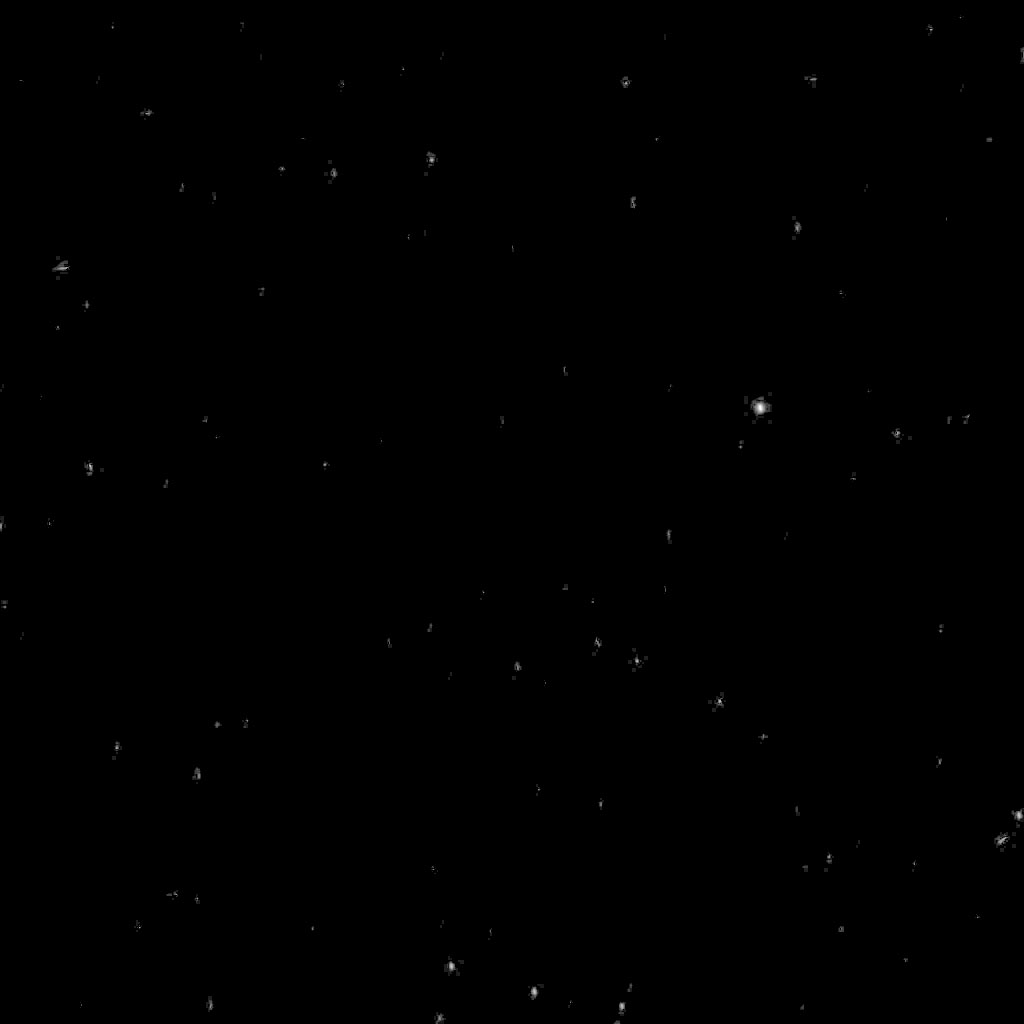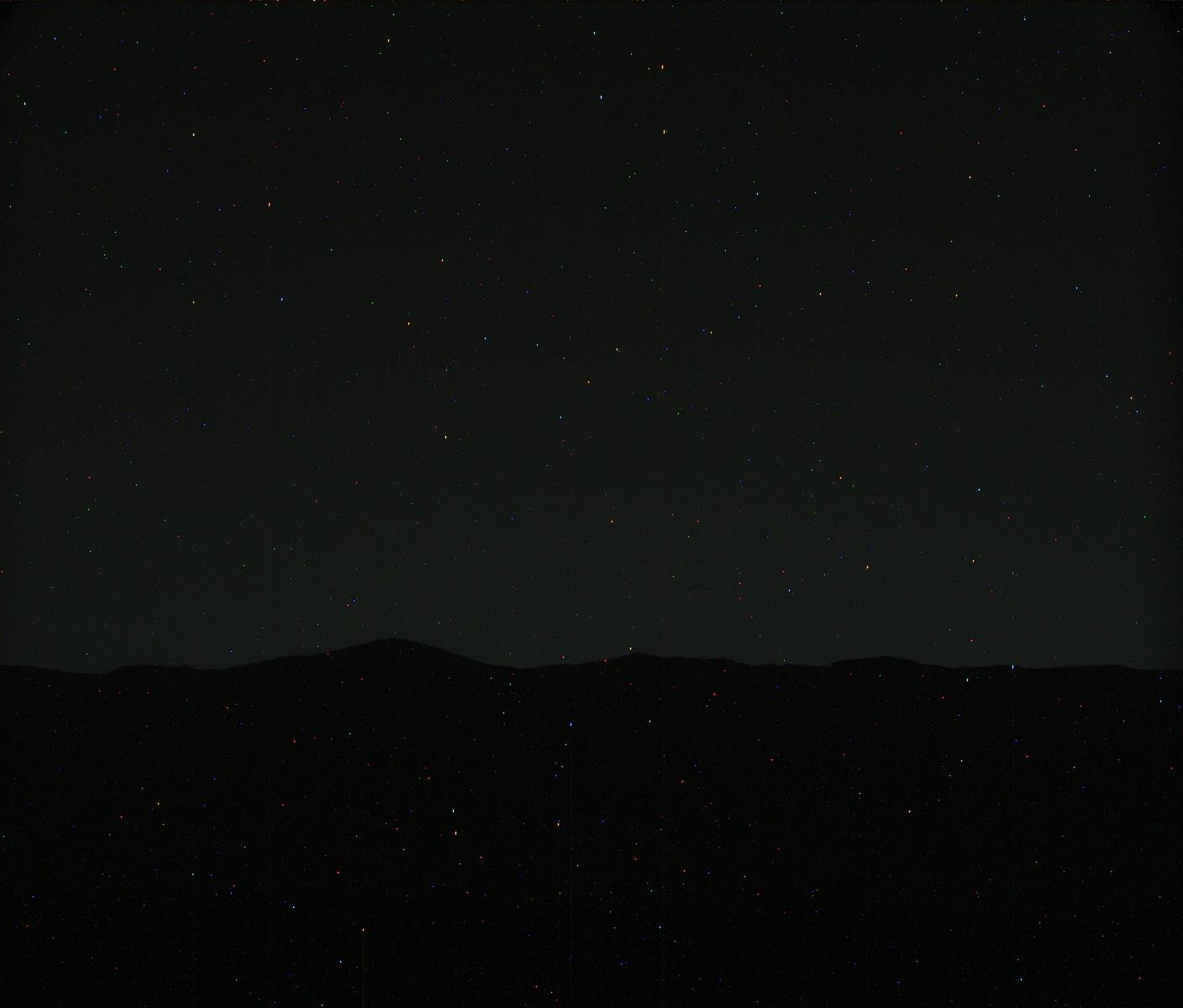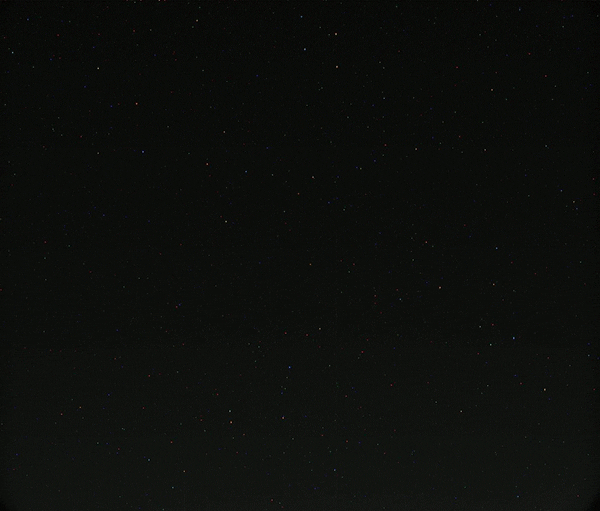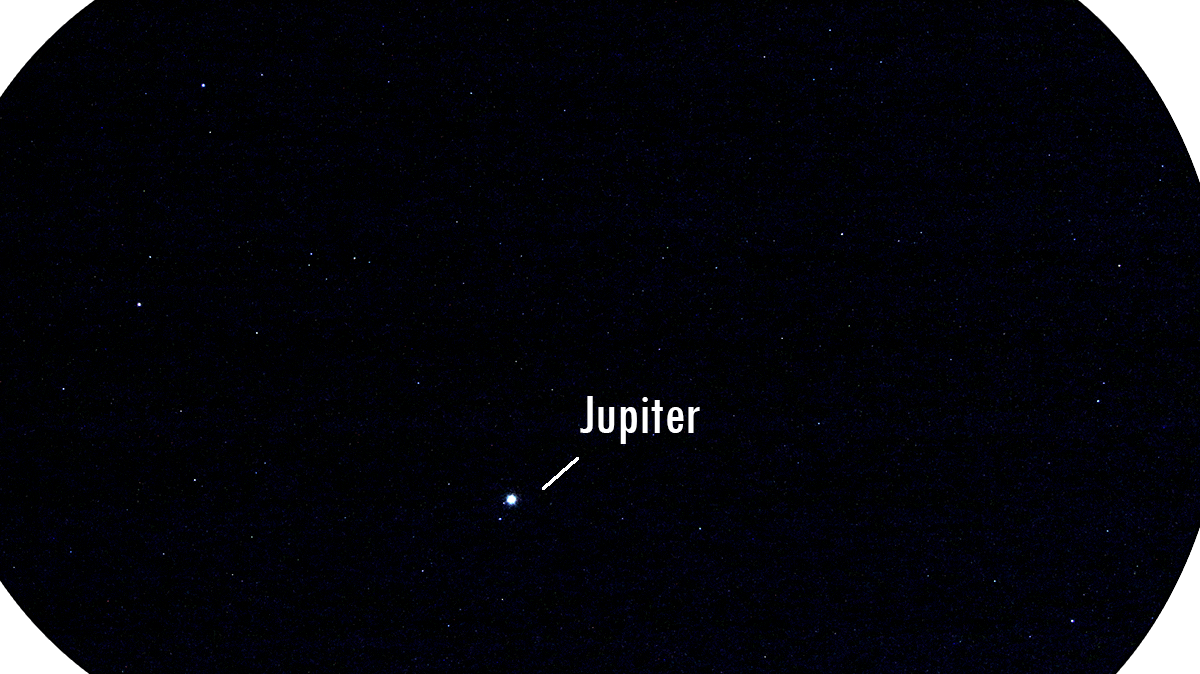It looks like you're using an Ad Blocker.
Please white-list or disable AboveTopSecret.com in your ad-blocking tool.
Thank you.
Some features of ATS will be disabled while you continue to use an ad-blocker.
share:
Or...maybe not.
Hi all,
Nasa has recently posted a rare image transmitted from MSL Curiosity rover of our Earth and moon, as seen from the surface of Mars, now around 99 Million miles away.
Earth and Lunar appear as two tiny points of light, shown against the dark sky at Martian dusk.
Here's a link to the image;
NASA Curiosity Image of Earth from Mars
Spectacular that the very distant Earth and Moon can even be seen and imaged at so far away, but even more amazing is that NO OTHER points of light are to be seen against the dark Martian sky!
NO STARS!
We can see and image the teeny, tiny Earth and Moon...but not the millions of stars that should be lighting up the image like a Christmas tree against the dark Martian sky. NASA says the image was processed to 'remove cosmic rays'....it says nothing about removing millions of stars.
With the Moon images, the lack of stars was said to be due to the high albedo of the Lunar surface and the amount of Sunlight being reflected from it basically drowned out the starlight from the shots...this isn't the case with this Curiosity shot..there's no light pollution, no Sunlight being reflected from a bright surface, and it's dark...even from Earth at dusk, WITH our street lights and myriad other light sources causing light pollution, we can all see hundreds of thousands of stars and can image them too.
So why not on Mars?
We can image the feeble light reflected from the Earth and even fainter light from the Moon from 160 Million Km away...but not the millions of stars?
Hi all,
Nasa has recently posted a rare image transmitted from MSL Curiosity rover of our Earth and moon, as seen from the surface of Mars, now around 99 Million miles away.
Earth and Lunar appear as two tiny points of light, shown against the dark sky at Martian dusk.
Here's a link to the image;
NASA Curiosity Image of Earth from Mars
Spectacular that the very distant Earth and Moon can even be seen and imaged at so far away, but even more amazing is that NO OTHER points of light are to be seen against the dark Martian sky!
NO STARS!
We can see and image the teeny, tiny Earth and Moon...but not the millions of stars that should be lighting up the image like a Christmas tree against the dark Martian sky. NASA says the image was processed to 'remove cosmic rays'....it says nothing about removing millions of stars.
With the Moon images, the lack of stars was said to be due to the high albedo of the Lunar surface and the amount of Sunlight being reflected from it basically drowned out the starlight from the shots...this isn't the case with this Curiosity shot..there's no light pollution, no Sunlight being reflected from a bright surface, and it's dark...even from Earth at dusk, WITH our street lights and myriad other light sources causing light pollution, we can all see hundreds of thousands of stars and can image them too.
So why not on Mars?
We can image the feeble light reflected from the Earth and even fainter light from the Moon from 160 Million Km away...but not the millions of stars?
reply to post by MysterX
On looking at the pics and reading from your links it says this is an early evening photo, and the earth is sort of like we'd see Venus in the early evening, the brightest thing up there (and it's still faint). In zooming in I think I see other little pinpoints of light which could be stars.
Anyway, are you saying that there really are no stars when seen from other planets, that earth is unique in having stars to see? Or that the Rover isn't equipped to image stars, but its cameras work best to image their local environment and not the night sky? Or that there is no sky, and we are all living in a large container with holes cut into it? Or...worse of all....Earth is all alone in the universe, literally (except for Mars)!
On looking at the pics and reading from your links it says this is an early evening photo, and the earth is sort of like we'd see Venus in the early evening, the brightest thing up there (and it's still faint). In zooming in I think I see other little pinpoints of light which could be stars.
Anyway, are you saying that there really are no stars when seen from other planets, that earth is unique in having stars to see? Or that the Rover isn't equipped to image stars, but its cameras work best to image their local environment and not the night sky? Or that there is no sky, and we are all living in a large container with holes cut into it? Or...worse of all....Earth is all alone in the universe, literally (except for Mars)!
edit on 8-2-2014 by Aleister because: (no reason given)
reply to post by MysterX
Here's a picture of stars seen from Mars taken by Spirit rover in 2004

Stars in Orion as Seen from Mars
So why not on Mars?
Here's a picture of stars seen from Mars taken by Spirit rover in 2004

Stars in Orion as Seen from Mars
edit on 8-2-2014 by gortex because: edit to add link
Cameras can be finicky too. you focus on Earth and it might not pic up surrounding light as well. Cameras don't have our eye and brain to fill in
gaps.
reply to post by Aleister
Hello Aleister.
Go out tonight at dusk (assuming it isn't cloudy) and look up at the darker area of the sky...you will see thousands of stars, major constellations and sure, the odd planet or so.
We all know this is the way it is.
Curiosity of obviously well set up to capture faint light sources, or else it wouldn't have been able to capture the very distant Earth and its Moon anywhere near as well-defined as it has done in this image.
I'm not actually saying that stars are only visible from Earth, as i don't know if that is the case or not. I had assumed that stars, constellations and so on would be visible from every Solar body there is, including asteroids and comets (if we were standing on them at the time)
Heheh..i certainly don't have any theories about the Earth being alone, or we're all living in a box with hole cut into it!
Thought it was strange that very distant points of light from Earth and Lunar were clearly and nicely resolved in the image, but no stars were, and threw it out there for members to speculate upon, that's all...no wild conspiracy theories about why I'm afraid.
Hello Aleister.
Go out tonight at dusk (assuming it isn't cloudy) and look up at the darker area of the sky...you will see thousands of stars, major constellations and sure, the odd planet or so.
We all know this is the way it is.
Curiosity of obviously well set up to capture faint light sources, or else it wouldn't have been able to capture the very distant Earth and its Moon anywhere near as well-defined as it has done in this image.
I'm not actually saying that stars are only visible from Earth, as i don't know if that is the case or not. I had assumed that stars, constellations and so on would be visible from every Solar body there is, including asteroids and comets (if we were standing on them at the time)
Heheh..i certainly don't have any theories about the Earth being alone, or we're all living in a box with hole cut into it!
Thought it was strange that very distant points of light from Earth and Lunar were clearly and nicely resolved in the image, but no stars were, and threw it out there for members to speculate upon, that's all...no wild conspiracy theories about why I'm afraid.
MysterX
Spectacular that the very distant Earth and Moon can even be seen and imaged at so far away, but even more amazing is that NO OTHER points of light are to be seen against the dark Martian sky!
NO STARS!
We can see and image the teeny, tiny Earth and Moon...but not the millions of stars that should be lighting up the image like a Christmas tree against the dark Martian sky. NASA says the image was processed to 'remove cosmic rays'....it says nothing about removing millions of stars.
Maybe they removed the stars in order to be able to pin point earth in the martian sky for them to illustrate to us. I doubt they feel obliged to explain everything to us, besides im sure they enjoy watching us wondering & coming up with all sorts of conspiracies lol
Just my opinion.
reply to post by Xeven
I don't buy that at all.
If a camera can capture the starlight reflected from the Earth and Moon, it can also capture starlight from the Millions of other stars, at least the ones we can see clearly at dusk here on Earth (even with our artificial light drowning out some of their brightness, which isn't a problem at dusk on Mars of course).
I don't buy that at all.
If a camera can capture the starlight reflected from the Earth and Moon, it can also capture starlight from the Millions of other stars, at least the ones we can see clearly at dusk here on Earth (even with our artificial light drowning out some of their brightness, which isn't a problem at dusk on Mars of course).
reply to post by MysterX
I was playing with the premise, but not by much, as even where I am, which is near a city, there are very few stars at night due to light pollution. I love it when I get out somewhere where you can actually see the milky way. The Mars pic you point to was taken in the early evening, so most of the stars are missing. Earth must be very bright in the Martian sky, it would be the brightest planet there during much of the year (such as Venus is our brightest), and our moon would stand out. What a sight! It would be fun to see the moon transit earth from Mars, that's a pic which would be worth writing home about (and by home I mean Mars).
I was playing with the premise, but not by much, as even where I am, which is near a city, there are very few stars at night due to light pollution. I love it when I get out somewhere where you can actually see the milky way. The Mars pic you point to was taken in the early evening, so most of the stars are missing. Earth must be very bright in the Martian sky, it would be the brightest planet there during much of the year (such as Venus is our brightest), and our moon would stand out. What a sight! It would be fun to see the moon transit earth from Mars, that's a pic which would be worth writing home about (and by home I mean Mars).
edit on 8-2-2014 by Aleister because: (no reason given)
reply to post by MegaSpace
That's a possible and reasonable explanation MegaSpace.
But why bother to mention removing cosmic rays, if they couldn't be bothered to mention obscuring all the stars?
That part doesn't make much sense to me.
In many other images of deep space, star fields they show ALL the stars and highlight or circle the object of interest among the stars...if an image of an asteroid or comet is taken, it is always shown against the star field, and circled or otherwise pointed out..they don't remove the stars and show the asteroid on its own against a black sky as far as i know.
That's a possible and reasonable explanation MegaSpace.
But why bother to mention removing cosmic rays, if they couldn't be bothered to mention obscuring all the stars?
That part doesn't make much sense to me.
In many other images of deep space, star fields they show ALL the stars and highlight or circle the object of interest among the stars...if an image of an asteroid or comet is taken, it is always shown against the star field, and circled or otherwise pointed out..they don't remove the stars and show the asteroid on its own against a black sky as far as i know.
reply to post by MysterX
Im no expert but don't cosmic rays come from stars? My opinion is yes stars emit cosmic rays, so they have removed the stars in order to remove the cosmic rays but maybe they are using terms that the uneducated public can understand?.
Im a photographer of over 20 years & when i looked at the picture, is what came to my mind what id do in order to illustrate where earth is on the martian sky.
My two cents. Im off to bed.
Im no expert but don't cosmic rays come from stars? My opinion is yes stars emit cosmic rays, so they have removed the stars in order to remove the cosmic rays but maybe they are using terms that the uneducated public can understand?.
Im a photographer of over 20 years & when i looked at the picture, is what came to my mind what id do in order to illustrate where earth is on the martian sky.
My two cents. Im off to bed.
reply to post by MegaSpace
No, Cosmic rays come from exploding stars, not from starlight emitted by them.
But thanks for your comments, sleep well.
No, Cosmic rays come from exploding stars, not from starlight emitted by them.
But thanks for your comments, sleep well.
reply to post by gortex
Thanks Gortex.
The images of the stars in Orion taken from Mars show the rovers are capable of capturing them, the image you posted was a long exposure (8 seconds)..i'm wondering how long the exposure was for the image i'm talking about..long enough to clearly and sharply capture distant Earth and even dimmer Moon, so i would have thought long enough an exposure to capture light from major star constellations at least.
Thanks Gortex.
The images of the stars in Orion taken from Mars show the rovers are capable of capturing them, the image you posted was a long exposure (8 seconds)..i'm wondering how long the exposure was for the image i'm talking about..long enough to clearly and sharply capture distant Earth and even dimmer Moon, so i would have thought long enough an exposure to capture light from major star constellations at least.
edit on 8-2-2014 by MysterX because: typo
reply to post by MysterX
I'm sure it is purely due to a relatively short exposure. Earth looks very bright from Mars, it had apparent magnitude of -1.15 on the day the image was taken (I checked this in Stellarium). A human observer with normal vision, if standing on Mars, could easily see Earth and the moon as two distinct, bright "evening stars." - mars.jpl.nasa.gov...
Notice how faint it looks in the image. There were no bright stars in the camera's field of view, and the sky was still lit with some twilight after sunset.
Curiosity's Mastcam wasn't made for capturing the glory of the night sky. It has made long-exposure night sky shots in the past, but those are mostly filled with camera noise and cosmic rays. Only a few of the bright stars could be identified.
Do an experiment yourself: take your camera out on a clear night, and try to take pictures of stars ;-)
I'm sure it is purely due to a relatively short exposure. Earth looks very bright from Mars, it had apparent magnitude of -1.15 on the day the image was taken (I checked this in Stellarium). A human observer with normal vision, if standing on Mars, could easily see Earth and the moon as two distinct, bright "evening stars." - mars.jpl.nasa.gov...
Notice how faint it looks in the image. There were no bright stars in the camera's field of view, and the sky was still lit with some twilight after sunset.
Curiosity's Mastcam wasn't made for capturing the glory of the night sky. It has made long-exposure night sky shots in the past, but those are mostly filled with camera noise and cosmic rays. Only a few of the bright stars could be identified.
Do an experiment yourself: take your camera out on a clear night, and try to take pictures of stars ;-)
edit on 8-2-2014 by wildespace because:
(no reason given)
From your source:
Ever notice how you can see Venus before the other stars come out?
A human observer with normal vision, if standing on Mars, could easily see Earth and the moon as two distinct, bright "evening stars."
Ever notice how you can see Venus before the other stars come out?
reply to post by MysterX
I remember that camera angle from earlier in sol

and some of the others

I think they have taken the stars out , usually when you do a long enough exposure to catch a planet and its moons you will get a few stars show up .. one momento ill get Gemini..

funBox
I remember that camera angle from earlier in sol

and some of the others

I think they have taken the stars out , usually when you do a long enough exposure to catch a planet and its moons you will get a few stars show up .. one momento ill get Gemini..

funBox
Phage
From your source:
A human observer with normal vision, if standing on Mars, could easily see Earth and the moon as two distinct, bright "evening stars."
Ever notice how you can see Venus before the other stars come out?
Come out from where? hmmmmmmm?
funbox
I think they have taken the stars out
Why would they do that? Stars have been captured and identified on Curiosity's night shots before. www.unmannedspaceflight.com...
Curiosity's Mastcam (or any other cam) just doesn't have enough oomph to give you starry sky images like the astrophotographers with their dedicated equipment and many hours of work do.
edit on 8-2-2014 by wildespace because: (no reason given)
reply to post by wildespace
Thanks wildespace, i suspected it might be due to exposure time, but was surprised how Earth and its Moon at their extreme distance were so well resolved, yet bright stars were not even faintly imaged.
I'd like to know how long this exposure actually was.
Thanks wildespace, i suspected it might be due to exposure time, but was surprised how Earth and its Moon at their extreme distance were so well resolved, yet bright stars were not even faintly imaged.
I'd like to know how long this exposure actually was.
new topics
-
Only two Navy destroyers currently operational as fleet size hits record low
Military Projects: 4 hours ago -
George Stephanopoulos and ABC agree to pay $15 million to settle Trump defamation suit
Mainstream News: 9 hours ago
top topics
-
George Stephanopoulos and ABC agree to pay $15 million to settle Trump defamation suit
Mainstream News: 9 hours ago, 17 flags -
Light from Space Might Be Travelling Instantaneously
Space Exploration: 17 hours ago, 9 flags -
More Bad News for Labour and Rachel Reeves Stole Christmas from Working Families
Regional Politics: 15 hours ago, 8 flags -
Only two Navy destroyers currently operational as fleet size hits record low
Military Projects: 4 hours ago, 7 flags
active topics
-
-@TH3WH17ERABB17- -Q- ---TIME TO SHOW THE WORLD--- -Part- --44--
Dissecting Disinformation • 3687 • : angelchemuel -
The Mystery Drones and Government Lies
Political Conspiracies • 72 • : tarantulabite1 -
Only two Navy destroyers currently operational as fleet size hits record low
Military Projects • 1 • : alwaysbeenhere2 -
A priest who sexually assaulted a sleeping man on a train has been jailed for 16 months.
Social Issues and Civil Unrest • 30 • : alwaysbeenhere2 -
They Know
Aliens and UFOs • 86 • : ianmoone3 -
George Stephanopoulos and ABC agree to pay $15 million to settle Trump defamation suit
Mainstream News • 11 • : WeMustCare -
President-Elect DONALD TRUMP's 2nd-Term Administration Takes Shape.
Political Ideology • 331 • : WeMustCare -
Nov 2024 - Former President Barack Hussein Obama Has Lost His Aura.
US Political Madness • 15 • : WeMustCare -
Former DNI-Congressman John Ratcliffe says the U.S. Government is Intimidated by UFOs.
Aliens and UFOs • 41 • : WeMustCare -
One out of every 20 Canadians Dies by Euthanasia
Medical Issues & Conspiracies • 23 • : Daughter2v2
